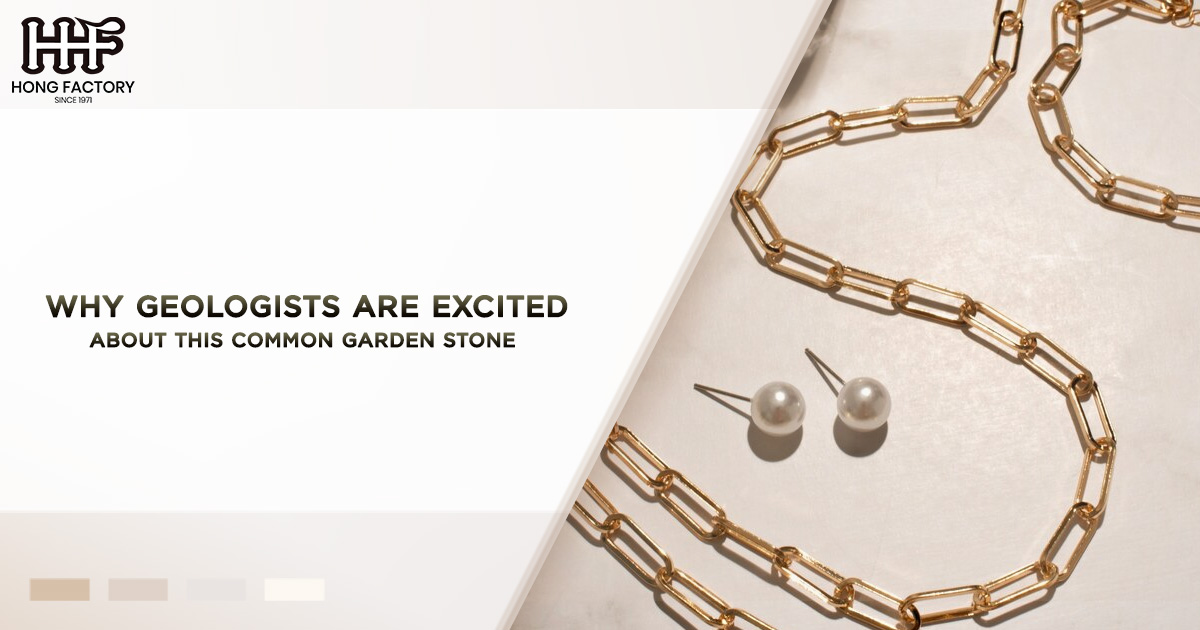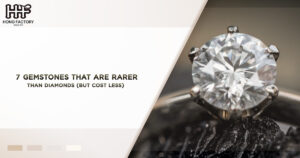In every garden lies a hidden world of geological wonder. Those seemingly mundane rocks strewn across flower beds or used as decorative pathways might hold secrets that excite professionals worldwide especially geologists. In fact, some of these common garden stones are far more than they appear to be. They may carry secrets of Earth’s ancient history or even have value as natural treasures that you can turn into stunning mineral jewelry.
Let’s dive deep into the remarkable reasons why geologists are finding so much value in garden rocks, and how you can uncover their hidden potential.
The Hidden Value of Garden Rocks
When most people think of garden stones, they often consider them as decorative items or practical features for landscaping. However, these rocks may hold secrets that geologists find extraordinary. Beneath their weathered surfaces lies a story millions or even billions of years in the making.
Rocks as Time Capsules
Geologists view rocks as time capsules that record the history of the Earth. Garden rocks might not look like much, but many are pieces of ancient formations that have traveled vast distances due to erosion, glacial movement, or human intervention. By studying these stones, geologists can trace their origins, understand ancient environments, and even uncover the processes that shaped our planet.
Some garden stones may even contain fossils, providing direct evidence of life from Earth’s distant past. Others might include mineral inclusions that reveal the planet’s geological history in vivid detail. What to the untrained eye looks like a grey slab could, to a geologist, be a fragment of Earth’s hidden story.
Common Garden Stones With Surprising Geological Importance
So, what types of garden rocks hold the most interest to geologists? Let’s explore a few examples of stones you might stumble across in your backyard that have scientific, aesthetic, or even monetary value.
1. Quartz – The Sparkling Treasure Hiding in Plain Sight
Quartz is one of the most abundant minerals on Earth, and it’s not uncommon to find quartz-rich stones in gardens. These stones may appear dull due to weathering, but with a little cleaning, their natural sparkle is revealed. Quartz possesses a crystalline structure that makes it highly desirable for both scientific study and ornamental use.
Geologists admire quartz for its resilience and its role in Earth’s geological processes. For hobbyists, quartz’s clear or rose-tinted hues make it a favorite for creating stunning mineral jewelry.
Tip : How to Identify Quartz
- Look for stones with a glassy or crystalline appearance.
- Quartz is often colorless, white, or slightly pink, but it can come in shades like smoky grey or purple (amethyst).
2. Granite – The Ancient Builder
Granite is a common garden stone that often gets overlooked. Its speckled appearance, created by a mix of quartz, feldspar, and mica minerals, tells geologists a story of intense heat and pressure deep beneath the Earth’s surface. As an igneous rock, granite formed from slowly cooled magma over millions of years, making it a prime subject for geological study.
Why Geologists Love Granite :
- Its mineral composition provides clues about Earth’s crust.
- It often contains feldspar, which is useful in dating rocks through radiometric methods.
If polished, granite’s durability and beauty make it a popular choice for countertops. But to a geologist, each slab is more valuable as a record of Earth’s fiery past.
3. Limestone – The Keeper of Fossils
Limestone is another common garden rock that’s rich in geological significance. Formed from accumulated marine sediments, limestone often contains fossils of ancient sea life such as shells, corals, or even tiny microorganisms.
How to Recognize Limestone :
- It is usually light in color—white, cream, or grey.
- When scratched, it leaves a white mark due to its calcium carbonate content.
For geologists, limestone provides insights into ancient marine ecosystems. For you, it may serve as a beautiful addition to your garden or even as a source for unique fossil discoveries.
Creating Mineral Jewelry From Garden Stones
Transforming garden rocks into mineral jewelry is a growing trend among nature enthusiasts and DIY crafters. If you’ve ever admired a pendant made from polished stone or gemstone jewelry, it’s worth noting that many of these pieces started as unassuming rocks.
By identifying stones like quartz, jasper, or even agate in your garden, you can uncover potential raw materials for creating one-of-a-kind jewelry pieces.
How to Get Started :
- Identify the Stone : Research or seek guidance to determine a stone’s mineral composition and suitability for crafting.
- Polish Your Find : Polishing garden rocks using a rock tumbler or sandpaper reveals their true beauty.
- Design Your Jewelry : Wire wrapping, drilling, or setting polished stones into metal mounts transforms them into wearable art.
Not only is this process rewarding, but it also connects you to Earth’s natural treasures in a deeply meaningful way.
How to Identify Geological Finds in Your Own Garden
Exploring your garden for geological treasures is easier than you might think. With just a few tools and some basic knowledge, you can start uncovering the secrets hidden in everyday garden rocks.
Essential Tools for Rock Identification
- Magnifying Glass : To closely examine texture and inclusions.
- Geologist’s Hammer : For splitting larger rocks to see their internal structure.
- Identification Guide : Books or online resources help you match your finds to known minerals.
- Acid Test Kit : Useful for identifying carbonate rocks like limestone.
Tips for Beginner Rock Hunters
- Pay Attention to Texture and Color : Smooth stones might indicate water erosion, while jagged edges suggest minimal movement.
- Search After Rainfall : Wet rocks are easier to examine and often reveal hidden details.
- Look for Clusters : Unusual concentrations of certain types of rocks may indicate an ancient glacial or river deposit.
By carefully observing your garden rocks, you might stumble upon a natural treasure that could rival the excitement of any geological expedition.
Why Your Garden Rocks Are More Than Meets the Eye
While garden stones might seem ordinary, their true value goes unnoticed by most people. For geologists, each rock represents a piece of a puzzle a connection to Earth’s incredible history. For enthusiasts like you, these stones may present opportunities to create beautiful art, uncover ancient fossils, or simply gain a deeper appreciation for nature’s complexity.
Embracing the Beauty of Natural Treasures
Understanding the hidden value of garden rocks can elevate how you view your surroundings. What once seemed to be mundane stones can transform into meaningful geological finds. Some can even be polished and crafted into gorgeous mineral jewelry, allowing you to wear a piece of Earth’s history.
So the next time you wander through your garden, take a closer look at the rocks underfoot. You might discover that the most ordinary-looking stone is, in fact, a timeless treasure waiting to be revealed.
Final Thoughts
The excitement geologists feel when encountering common garden stones stems from a deeper appreciation of Earth’s story. These rocks are more than landscaping tools they’re carriers of history, science, and beauty. Whether you’re interested in geology, crafting natural jewelry, or simply exploring the treasures in your own backyard, garden rocks offer a world of potential.
Who knows? The next time you pick up a stone in your garden, you might find yourself holding a piece of Earth’s incredible legacy something that could belong in a museum or even your jewelry collection.
By looking closer at the world around us, we open ourselves up to discovering the profound natural treasures hiding in plain sight. So, go ahead: search your garden with new eyes and see what surprises lie beneath the surface.




